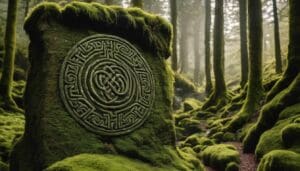Irish Saints and Their Legends: Exploring the Historical and Mythical Narratives
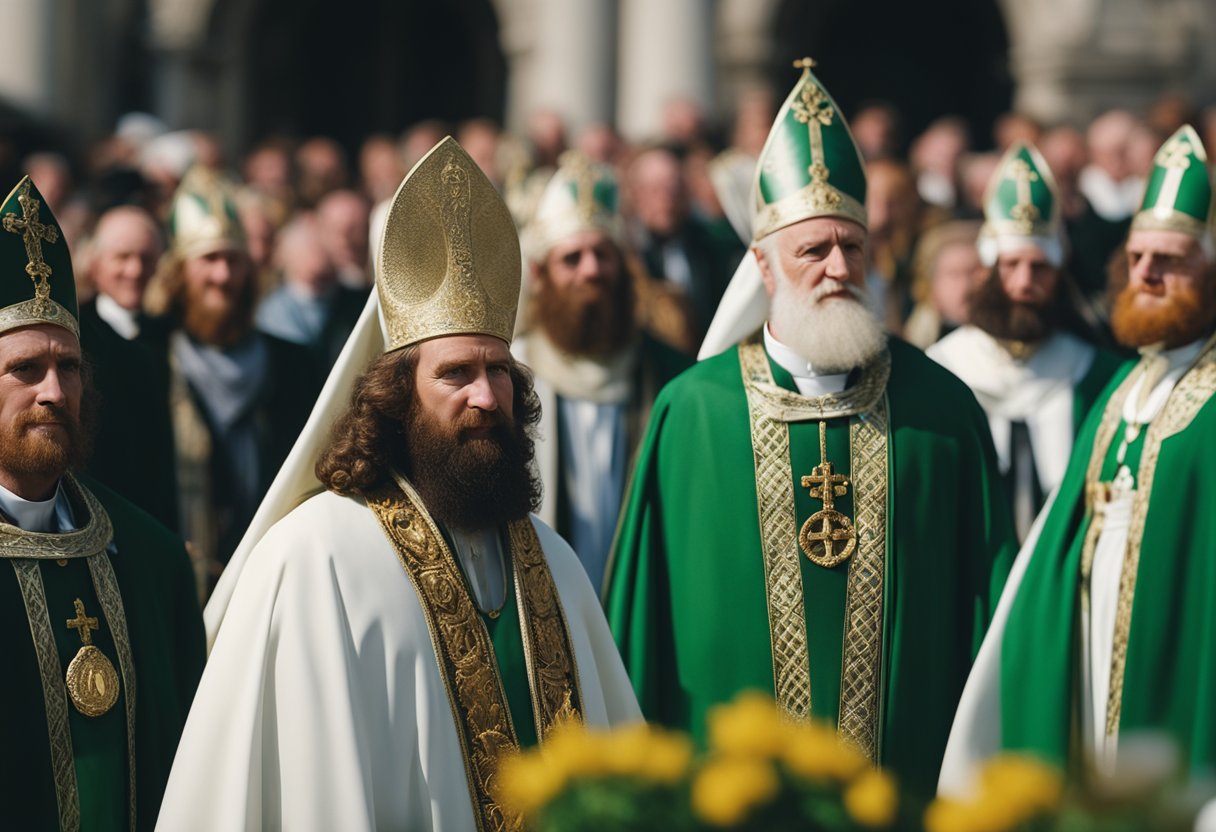
Updated On: April 22, 2024 by Eman Sameh
Ireland’s spiritual heritage boasts a tapestry of saints whose legends and teachings have permeated not just the bedrock of Irish faith but have also echoed through the annals of history and culture. The litany of Irish saints extends far beyond the renowned St. Patrick, encompassing figures who laid the foundations for a tradition rich in piety, learning, and artistry. These individuals, such as the revered Brigid of Kildare and the scholarly Columba, shaped a narrative that reflects the transition from paganism to Christianity, each carrying their own remarkable legends imbued with deep meanings and symbolism.
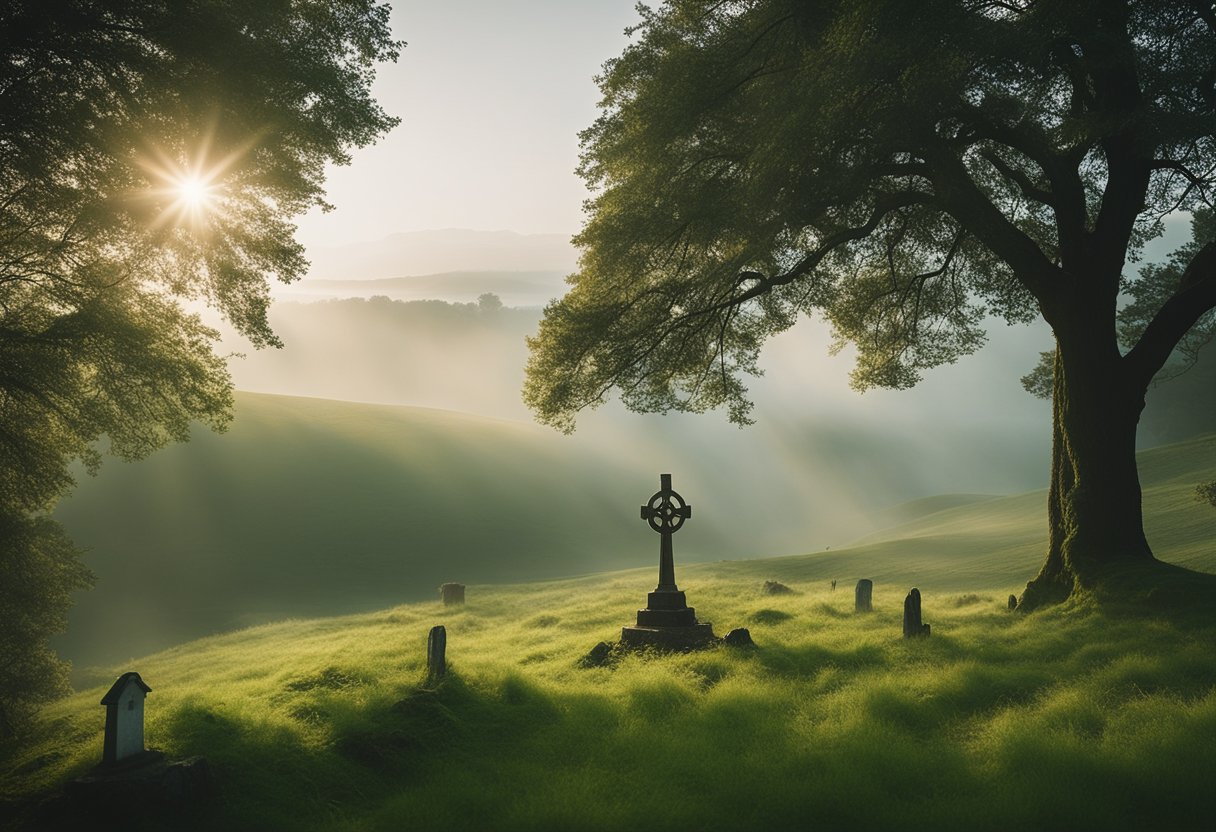
At the heart of these stories are the monastic schools and communities that became beacons of knowledge and spirituality, fostering advances in religious art and serving as bridges between Ireland, Scotland, and beyond. Within their tales lie the core principles of Irish hagiography, a genre that not only venerates saintly lives but also serves as a cultural lynchpin, imbuing the Irish with a sense of identity that has persisted through the ages. The legacies of these saints continue to manifest in contemporary celebrations and observances, basing themselves on a deep reverence that has transcended time to become an intrinsic part of Ireland’s cultural fabric.
Origins of Irish Hagiography
In exploring the rich tapestry of Irish hagiography, we uncover a unique blend of fact and legend deeply rooted in the early Christianisation of Ireland.
Early Christianity and Saints in Ireland
The advent of Christianity in Ireland is closely interwoven with the life of Saint Patrick, a towering figure in the nation’s religious narrative. In the 5th century, this Romano-British Christian missionary and bishop played a pivotal role in bringing the Latin-based Christian faith to Ireland. His efforts laid the groundwork for what would become a significant hagiographical tradition. The stories of saints that emerged during this time served to both inspire and instruct the growing Irish Christian populace. As Christianity flourished, so did the writing of saints’ lives, which were initially composed in Latin, reflecting the scholarly language of the church at the time.
Legends and the Historical Record
The intertwining of legends with the factual lives of saints has produced a rich hagiographical tradition wherein it is not uncommon for the miraculous to sit alongside the mundane. The early Irish saints’ biographies were often recorded to establish their sanctity and to promote their cults. Such texts are ripe with accounts of miracles and visions, reinforcing the divine authority the Church sought to establish in Ireland. The melding of Ireland’s vibrant oral tradition with the formal structure of ecclesiastical record-keeping created an exceptional genre of literature that continues to captivate scholars and believers alike.
St. Patrick: Patron Saint of Ireland
St. Patrick is revered as the Patron Saint of Ireland, famous for spreading Christianity across the island and establishing the ecclesiastical base in Armagh. His story intertwines with legends of shamrocks and the banishment of snakes from Ireland.
Captivity and Mission
At the age of sixteen, St. Patrick was taken into captivity by Irish raiders and spent six arduous years as a slave herding sheep. During this time, he found solace and strength in his faith. Upon his escape, he felt called to return to Ireland as a missionary, determined to convert the Irish to Christianity.
St. Patrick’s Legacy
We remember St. Patrick not only for his role in the Christianisation of Ireland but also for the symbols and traditions associated with him. The shamrock, used by Patrick to explain the Holy Trinity to potential converts, has become an emblem of Irish identity. Furthermore, he is credited with driving out all snakes from Ireland, though this is likely a metaphor for eradicating pagan practices. St. Patrick’s legacy endures, most prominently in Armagh, which remains a central point for the Church in Ireland.
Brigid of Kildare: A Revered Female Saint
In the pantheon of Irish saints, St. Brigid is one of the most celebrated female figures in Irish history. Her life and deeds are a testament to her enduring legacy.
Life and Ministry
St Brigid, also known as Brigid of Kildare, was born around 451 CE. At a young age, she entered religious life and founded several monasteries across Ireland, the most renowned being the convent in Kildare. Her establishment at Kildare became a centre of religion and learning, attracting many to its community. This institution was also associated with a unique cross made from reeds, now known as St Brigid’s Cross, which is often woven on her feast day to invoke protection.
Brigid’s Miracles and Feast Day
Brigid’s feast day occurs on February 1st, which coincides with the pagan festival of Imbolc, marking the beginning of spring. As the patroness of Ireland, she is celebrated for her numerous miracles, which range from healing the sick to her legendary bestowing of charitable gifts. Her legacy is honoured annually by weaving her cross and celebrating her life and contributions. Through stories of her kindness and miracles, St Brigid has inspired many, with some accounts blending her Christian legacy with attributes of a Celtic goddess of the same name.
Monastic Tradition and Scholarship
Monasticism played a pivotal role in the tapestry of Ireland’s ecclesiastical history, fostering scholarly pursuits and the preservation of knowledge.
Growth of Monasteries
Monasteries quickly sprang up across Ireland, becoming the epicentres of religious life and learning. Glendalough, founded by St. Kevin in the 6th century, is a testament to this era’s hunger for spiritual and intellectual growth. These monastic settlements were not mere places of worship but bustling communities where monks dedicated their lives to study, teaching, and intricate craftwork.
Irish Monks as Scholars and Scribes
Irish monks are renowned for their contributions to learning and the arts. They were diligent scholars and scribes, caretakers of vast literary and theological knowledge. The exquisite illuminated manuscripts, such as the Book of Kells, bear witness to the monks’ skills. Not just content with local endeavours, Irish monks and scholars played a significant role in the Christian cultural preservation and renaissance across Europe during the early Middle Ages.
Religious Art and Symbolism
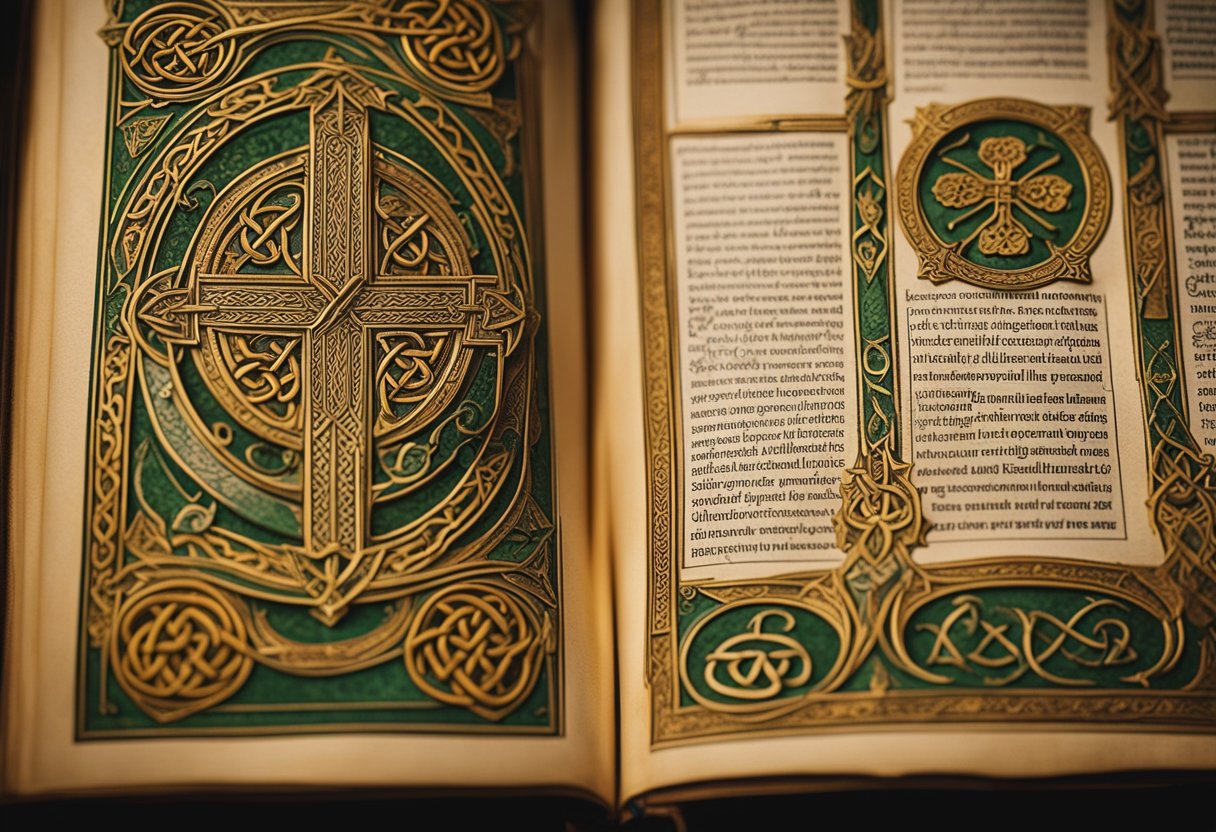
Irish religious art and symbolism represent a complex tapestry of history, faith, and artistic tradition, with profound influences found in both ancient Celtic and Christian heritage.
Celtic Crosses and Manuscripts
Celtic crosses can be found throughout Ireland, standing as enduring symbols of the country’s rich spiritual history. These crosses are distinguished by their unique form, featuring a central ring connecting the arms of the cross. Historically, they served not only as religious symbols but also as territorial markers or commemorative monuments. The intricacy of their design—a blend of Christian imagery and traditional Celtic patterns—is a testament to the artistic mastery of the ancient Irish. The Irish – Celtic jewellery symbols provide further insight into this rich artistic tradition.
The manuscripts created by Celtic monks are some of the most remarkable artefacts of medieval Europe. These illuminated texts, such as the Book of Kells, are decorated with elaborate ornamentation that includes interlacing patterns and stylised animal and human figures. These works of art were often encased in richly adorned book shrines, masterpieces of metalwork and gemstone encrustation.
Sacred Architecture
Ireland’s sacred architecture celebrates faith and community, from the great cathedrals to the more humble churches. Derry is notable for its impressive cathedrals, including St. Columb’s Cathedral, a prime example of Irish Gothic architecture. Its construction in the early 17th century symbolises the city’s resilience and religious heritage.
The architectural narrative of Irish religious buildings extends beyond grand cathedrals. Many churches across the nation express a simpler yet no less significant charm. They often feature local stone and are sited in locations that enhance their spiritual and aesthetic presence within the landscape. These structures reflect the religious fervour of the era and indicate the local craftsmanship and available materials of their time.
Columba and Iona: Bridging Ireland and Scotland

Before venturing into the heart of Columba’s mission and the enduring influence of Iona, it’s essential to recognise the central role these elements played in shaping early Christian Scotland. As we explore the deep connection that Columba forged between Ireland and Scotland and the ripple effect of Iona’s monastic community, the significance of these cultural and religious bonds becomes ever more apparent.
Columba’s Mission
Columba, or Colmcille as he’s known in Irish, was a figure of pivotal importance in the spread of Christianity across Scotland. Born in 521 in County Donegal, Ireland, he belonged to the powerful Ui Neill family. Despite his noble lineage, Columba’s most profound legacy came from his monk, abbot, and missionary work. In 563, he established a monastery on the Island of Iona, marking the start of his mission to evangelise the Picts of Scotland. His efforts facilitated the spread of Christianity and bolstered the connection between Scotland and Ireland through shared faith and pastoral practices.
Iona’s Influence
Iona, a small island in the Inner Hebrides, swiftly became a beacon of religious learning and culture due to Columba’s founding of a monastery there, which became a vital centre for the conversion of Scotland to Christianity. Iona Abbey was renowned throughout the region, and its scriptorium was responsible for creating exquisite manuscripts, such as the Book of Kells. The influence of Iona reached far beyond its shores, as the monastery became a place of pilgrimage and a staging ground for further missionary work across Scotland and into northern England. Through its efforts, Iona strengthened the Scottish church’s ties with Ireland and became a lasting symbol of Celtic Christianity‘s legacy.
Remarkable Legends and Their Meanings
In the rich tapestry of Irish hagiography, legends of saints carry profound symbolism, reflecting the cultural and spiritual values of the times. These stories not only captivate with miraculous deeds but also embody deeper truths about life and faith.
St. Brendan’s Voyages
St. Brendan, known as Brendan the Navigator, embarked on legendary sea voyages that continue to stir our imagination. His most famous journey, detailed in “The Voyage of St. Brendan,” tells of his quest across the Atlantic. Brendan and his fellow monks are said to have encountered wonders and perils, including an encounter with a sea creature that may inspire the Loch Ness Monster myth. Hailed as a pre-Columbian voyager to the Americas, the tale mirrors the spiritual search for the Promised Land, illustrating Irish monasticism’s adventurous spirit and deep piety.
Extraordinary Feats of Saints
Irish saints are often associated with miracles that reveal their closeness to the divine. These range from St. Patrick’s symbolic use of the shamrock to explain the Holy Trinity to the belief that he banished all snakes from Ireland. His story is a powerful element of Irish identity and Christian conversion narratives. The lives of other saints like Brigid of Kildare are interwoven with accounts of their remarkable deeds, from healing the sick to influencing the weather. These legends serve as vehicles for conveying moral lessons and showcasing these venerable figures’ protective and nurturing roles in Irish history and spirituality.
From Paganism to Christianity
Transitioning from paganism to Christianity, the fabric of Irish society was interwoven with myths, rituals, and beliefs that profoundly influenced the religious landscape. This transformation was not abrupt; it evolved through the strategic roles played by saints and the integration of localized traditions.
The Role of Saints in Conversion
Irish society underwent a significant religious shift as saints like Patrick and Bridget began to spread the message of Christ across the island. With the arrival of Christianity in Ireland, druid priests faced a new paradigm. Patrick’s assertion of Christian doctrine culminated in symbolic acts such as lighting the Paschal fire on the Hill of Tara, challenging the authority of the pagan high kings and druid advisors. Yet, the saints’ propensity for diplomacy and cultural sensitivity facilitated the gradual blend of beliefs.
Integrating Local Traditions
The cunning confluence of Christianity with indigenous customs was pivotal. For example, St. Bridget shares her name with a pagan goddess, reflecting the syncretism of the time. Worship sites were often established at locations already held sacred by the local populace, evidence of which can be found in the archaeological remains of ecclesiastical sites that previously held pagan significance. Rituals and symbols were adeptly repurposed, embodying the tenets of the new Christian faith and the essence of Irish pagan heritage.
Veneration and Canonisation
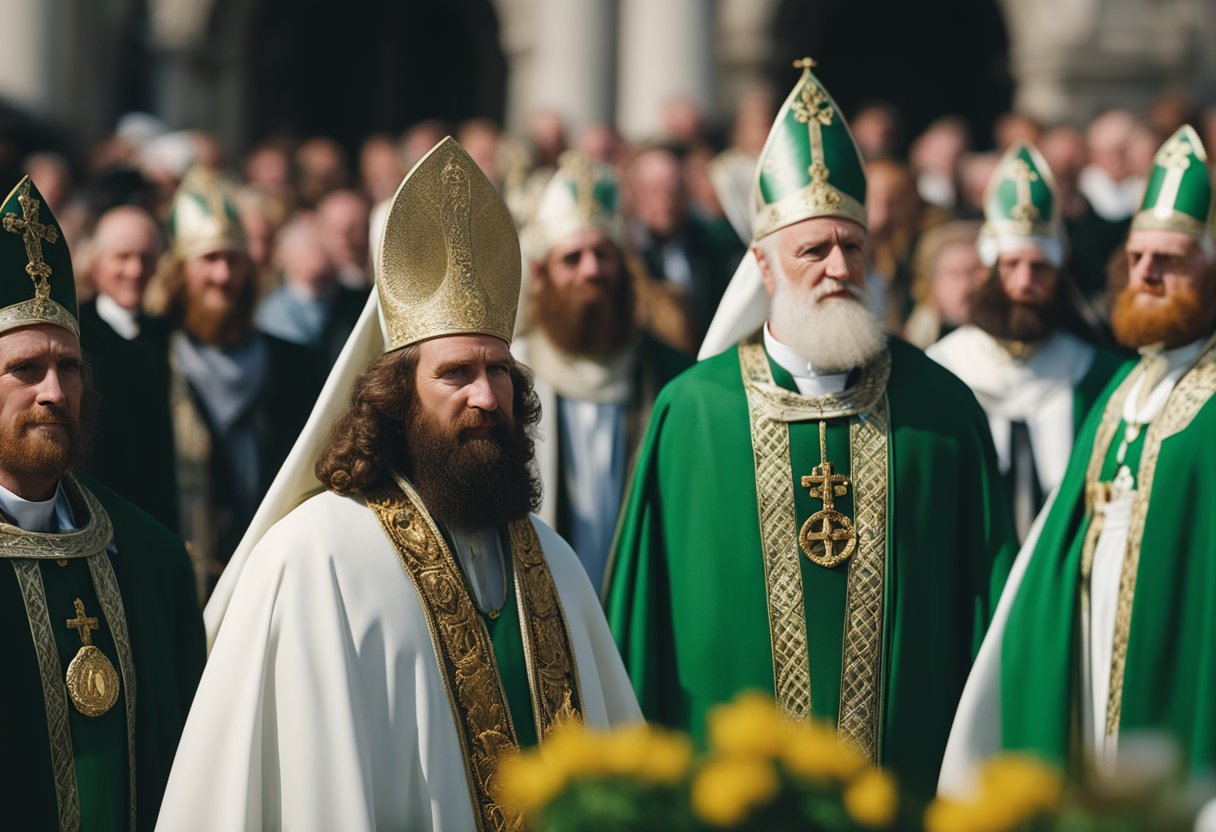
In exploring the legacy of Irish saints, we encounter a profound history of awe and the intricate canonisation process within the Catholic Church. These aspects illuminate the respect afforded to holy figures and delineate the formal path to sainthood.
Irish Martyrs and Saints
Irish history is rich with deeply revered figures for their faith and works. Some attain the status of martyrdom due to their sacrifices, such as St. Oliver Plunkett, who faced persecution and was put to death in 1681. He was canonised by Pope Paul VI in 1975, becoming the first new Irish saint in almost seven hundred years. His canonisation followed meticulous verification of miracles attributed to him, a testament to the stringent requirements of the process.
St. Oliver Plunkett’s story is one of many in Ireland’s tapestry of faith. The legends associated with Irish saints often inspire the faithful and celebrate the distinctive characteristics of Ireland’s spiritual history.
Global Recognition
Irish saints have achieved recognition beyond their local communities, with some even impacting the global Catholic consciousness. The process of being canonised involves scrutiny by the Vatican and requires proof of a life lived in heroic virtue and confirmed miracles posthumously.
The shared celebration of these saints’ feast days and the dissemination of their legends reveal their significance beyond Irish shores. Their stories resonate, telling of Ireland’s enduring spiritual and cultural influence.
In essence, the veneration of Irish saints and the intricate canonisation process in the Catholic tradition highlight a profound respect for these figures’ lives and their lasting impact on national and global scales.
Cultural Legacy of Irish Saints
The saints of Ireland have left an indelible mark on our nation, influencing our identity and creativity through centuries of shared history and folklore.
Patron Saints and National Identity
Our patron saints, such as St. Patrick and St. Brigid of Kildare, are woven into the very fabric of our national consciousness. St. Patrick, with his fabled banishment of snakes, is synonymous with Ireland’s heritage and is celebrated worldwide on 17 March. His story of captivity, spiritual revelation, and missionary zeal symbolise courage and faith, reinforcing our national identity. Similarly, St. Brigid, known for her compassion and miraculous acts, such as transforming water into beer, has become a figure of maternal kindness in our society.
Influence on Literature and Art
The influence of our saints extends to realms of literature and art, manifesting in the rich tapestry of Irish hagiography that constitutes an integral part of our literary heritage. Texts detailing their lives and works are not simply historical records; they are inspirational narratives that have shaped and been enshrined in Ireland’s self-styled moniker as the “Land of Saints and Scholars”. Saints like St. Columba and St. Kevin have inspired countless works of art, from stained glass in our churches to motifs in contemporary Celtic artwork. Through stories of St. Columba’s founding of monasteries such as Iona or St. Kevin’s harmony with nature at Glendalough, these figures encourage a love of learning and a reverence for the beauty of our land.
Contemporary Celebrations and Observances
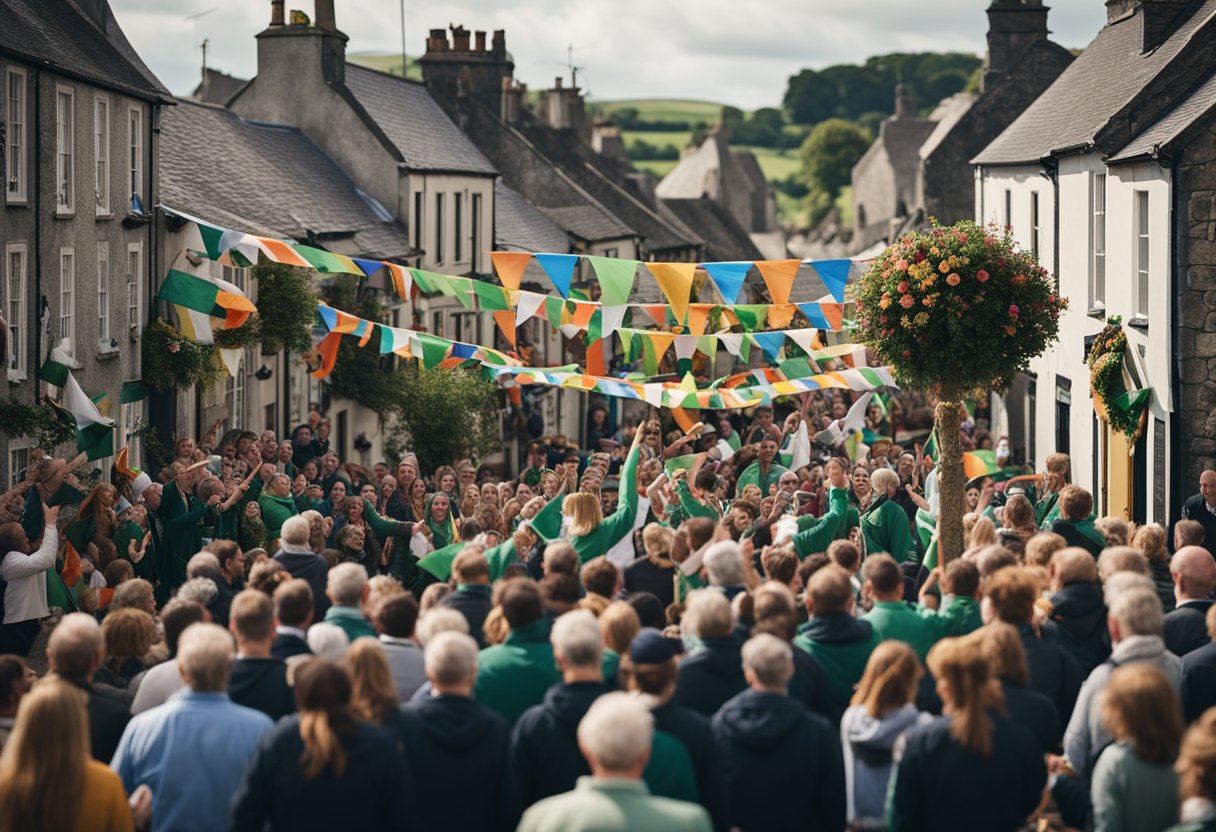
In Ireland, the ancient intertwines with the present in our vibrant celebrations honouring Irish saints and their narratives through annual feasts and modern-day devotion.
Annual Feasts and Pilgrimages
- Feast Day of St. Patrick: We don the colour green and participate in parades and festivities on 17 March, paying tribute to the patron saint of Ireland, St. Patrick. This day is a national holiday and a global celebration of Irish heritage.
- Feast Day of St. Brigid: We observe 1 February as the beginning of spring with St. Brigid’s Day, marked by the crafting of traditional Brigid’s Crosses. In Kildare, a town linked with the saint, pilgrimages and rituals occur at St. Brigid’s Cathedral.
Modern-day Devotion
We maintain reverence for our saints through various expressions of faith and heritage. Acts of devotion are prevalent, from visits to holy wells to participation in masses and prayer. The legends of saints like St. Brigid inform our communal ethics and offer spiritual guidance.
- St. Patrick: Modern-day devotion for St. Patrick extends beyond feast day celebrations, with pilgrimages to sites like Croagh Patrick in County Mayo, where thousands ascend the mountain, some barefoot, as a form of penance or spiritual search.
- King of Leinster: While not a saint, the storied past of the King of Leinster endures in our historical consciousness and motivates us to honour the rich tapestry of Irish royalty within our cultural observances.
Frequently Asked Questions
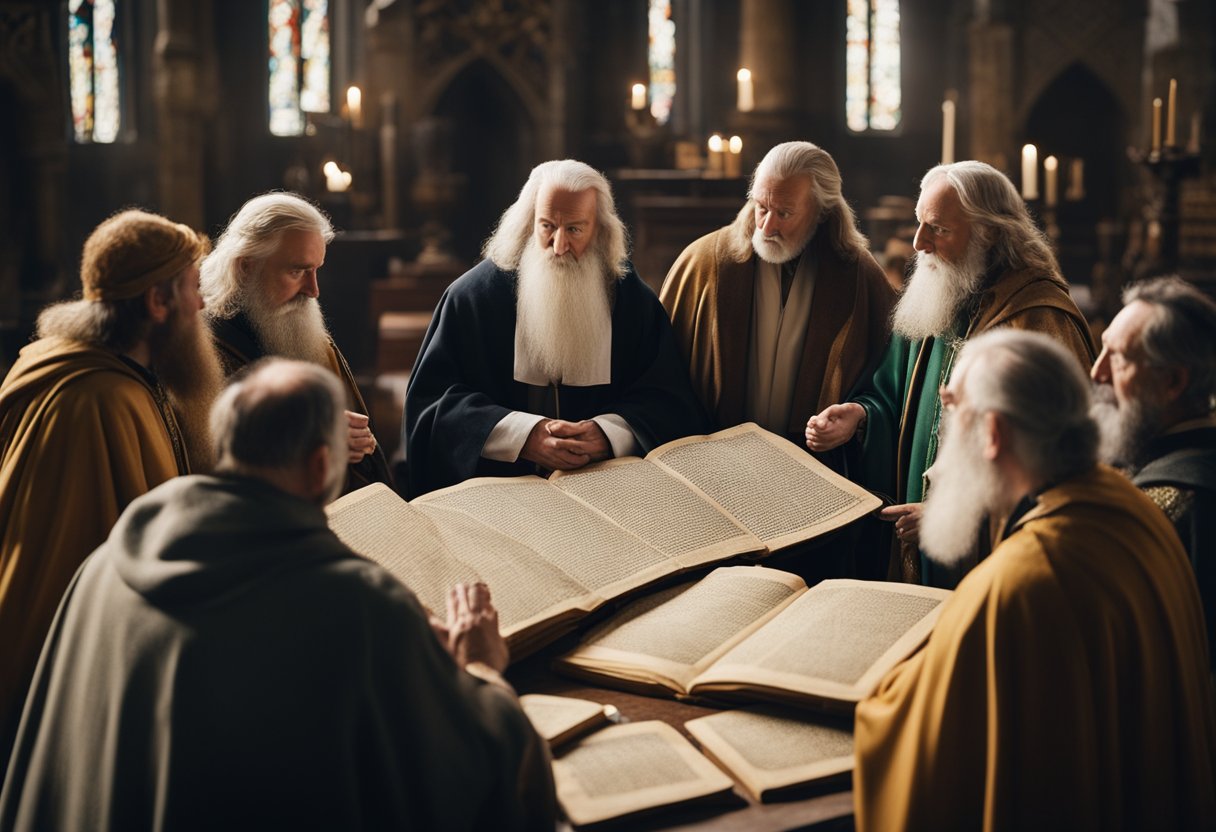
In this section, we explore some of the most intriguing questions about Irish saints, shedding light on their histories, legacies, and the rich tradition of hagiography in Ireland.
Who are the most celebrated Irish saints, and what are their stories?
The most venerated Irish saints include St. Patrick, renowned for spreading Christianity in Ireland, and St. Brigid of Kildare, one of the country’s patron saints known for her generous spirit and founding of the Kildare Abbey. Another celebrated saint, St. Columba is remembered for his missionary work and establishing monasteries.
What are the feast days associated with prominent Irish saints?
St. Patrick’s Day celebrated on 17 March, is an Irish saint’s most famous feast day, observed globally with parades and festivities. The feast of St. Brigid is on 1 February, heralding the beginning of spring in Ireland. St. Columba’s feast day is commemorated on 9 June.
Can you name female Irish saints and describe their contributions?
Female Irish saints such as St. Brigid have made significant contributions; she is known for her compassion and miracle work. St. Ita, regarded as the foster mother of saints, was influential for her spiritual wisdom. There were also nuns like St. Dymphna, patroness of those suffering from mental illness, who left a legacy of compassion and care.
Which Irish saints are known for their roles in warfare, and what are their histories?
St. Brendan, also known as Brendan the Navigator, had his legend interwoven with warfare when he purportedly blessed a piece of Iron that protected Eire from invasion. St. Columba is said to have participated indirectly in the Battle of Cul Dreimhne through a cursed book that led to the conflict.
How do the meanings behind the names of Irish saints reflect their legacies?
The names of Irish saints are emblematic of their attributes. For instance, Brigid means ‘exalted one,’ reflecting her high status in Irish hagiography. Columba means ‘dove,’ connoting peace and the Holy Spirit, which is significant as he was a missionary spreading Christianity.
What makes the twelve apostles of Ireland significant?
The Twelve Apostles of Ireland were twelve early monastic saints of the 6th century who studied under St. Finian at Clonard Abbey. They are significant for their role in the Christianisation of Ireland and their establishment of monastic centres across the country, which became hubs of religious and cultural learning.


